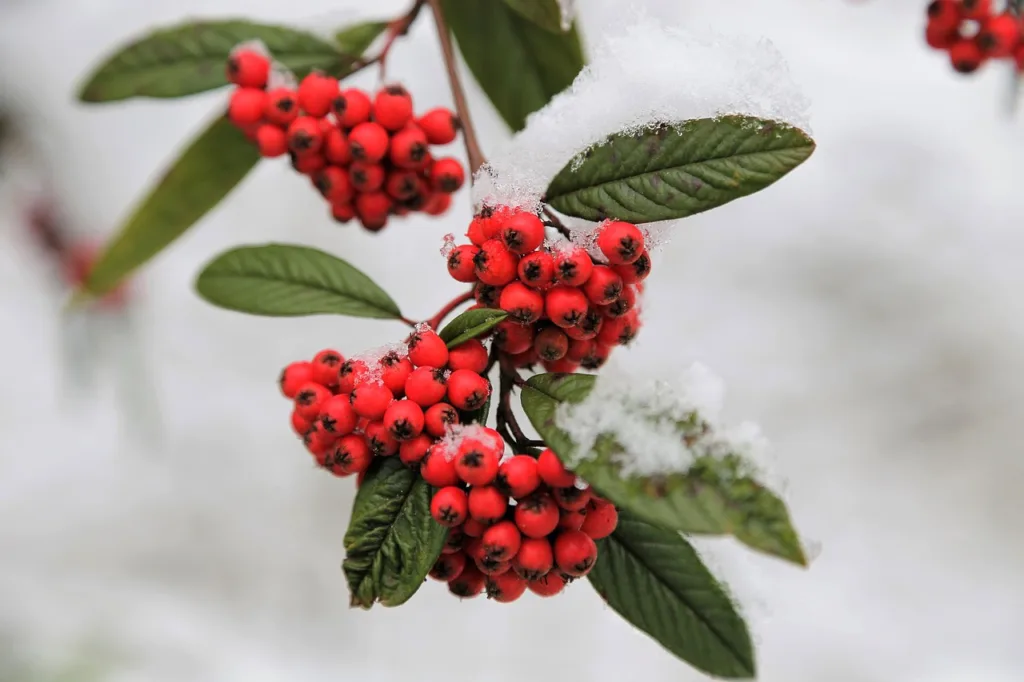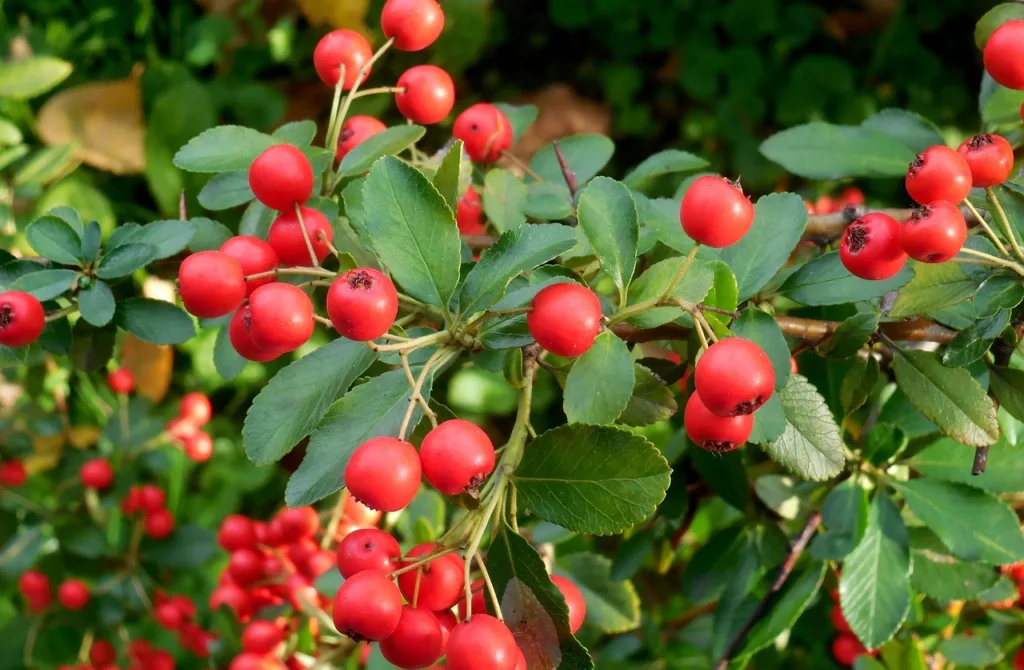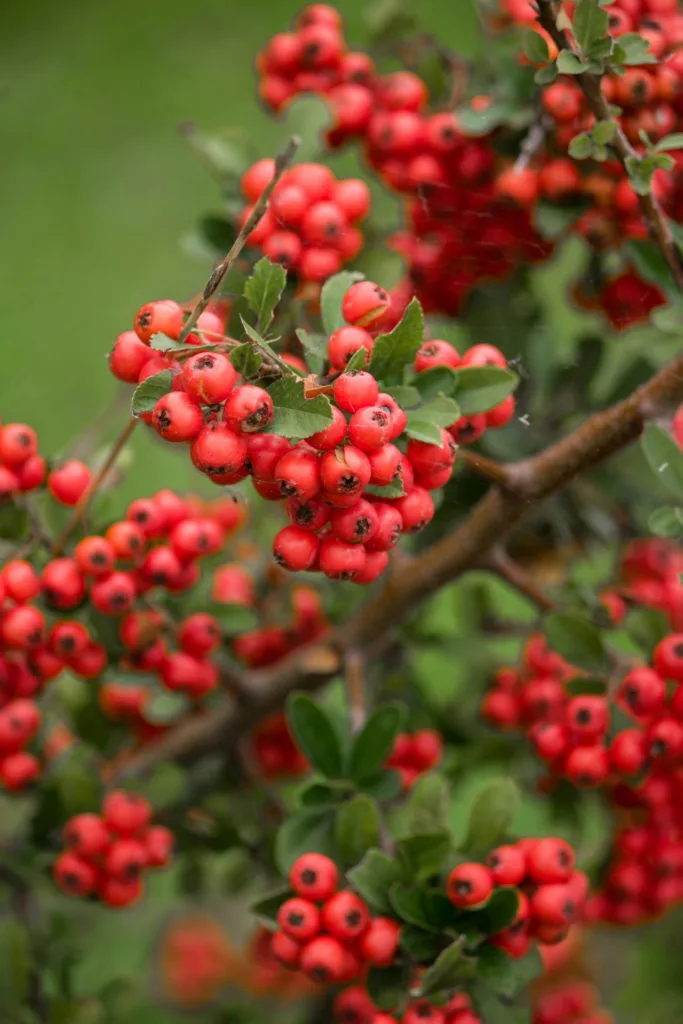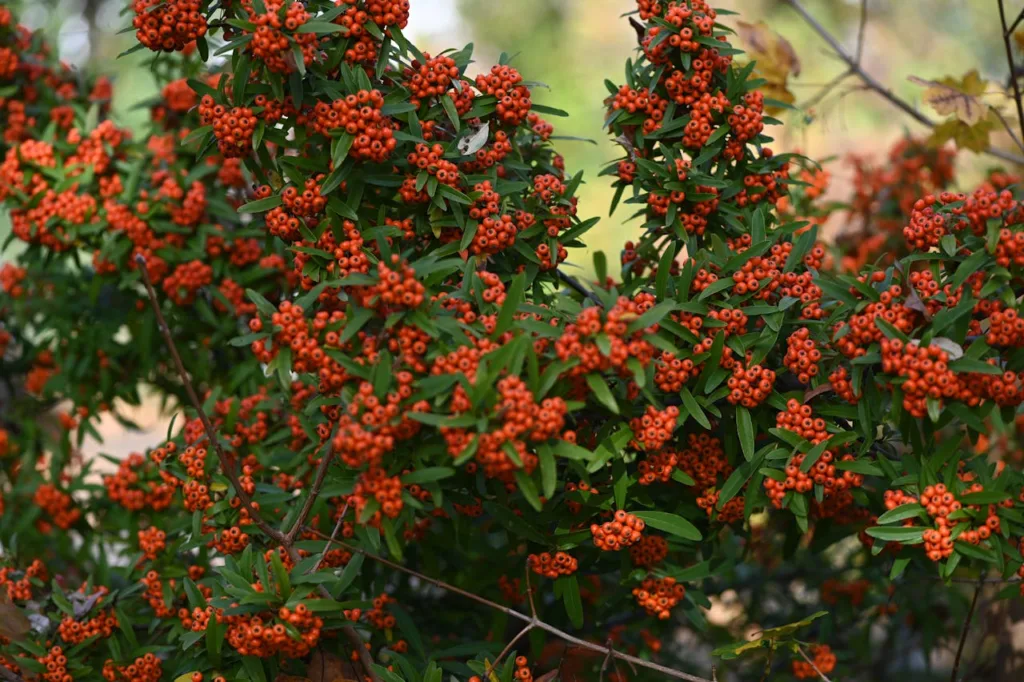Pyracantha is a genus of evergreen or semi-evergreen shrubs belonging to the family Rosaceae.
Commonly known as firethorns, these shrubs are valued for their ornamental features, including clusters of vibrant berries, glossy foliage, and often thorny branches.
Native to southeastern Europe and Asia, Pyracantha species are cultivated for their aesthetic appeal in gardens, landscaping, and horticulture.
Pyracantha, also known as firethorn, is a beautiful and all-around shrub that can add vibrant color and interest to any garden or landscape.
With its showy clusters of berries and dense leaves, pyracantha is a popular choice for hedging, screening, or training against walls or trellises.
In this comprehensive guide, we will explore the steps and techniques to successfully plant and grow pyracantha in your garden.
| Aspect | Description |
|---|---|
| Scientific Name | Pyracantha |
| Family | Rosaceae |
| Genus | Pyracantha |
| Native Region | Southeastern Europe, Asia |
| Common Name | Firethorn |
| Plant Type | Evergreen or semi-evergreen shrub |
| Berries | Small, colorful (red, orange, yellow) berries in clusters |
| Foliage | Glossy, serrated leaves |
| Flowers | Small, white flowers in late spring to early summer |
| Growth Habit | Upright, bushy growth habit; some varieties may have thorns |
| Hardiness Zones | Varies by species and cultivar |
| Versatility | Used for ornamental purposes, hedges, and against walls/fences |
| Sunlight Requirements | Full sun to partial shade |
| Soil Preferences | Well-draining soil, adaptable to various soil types |
| Pruning | Regular pruning to maintain shape, control size, and encourage flowering |
| Watering | Drought-tolerant once established, benefits from consistent watering |
| Wildlife Attraction | Berries attract birds, adding ecological value |

Choosing the Right Variety
Before diving into the planting process, it is essential to choose the right variety of pyracantha for your specific needs and growing conditions.
There are several cultivars available, each with its unique characteristics. Some popular varieties include ‘Mohave,’ ‘Orange Glow,’ and ‘Soleil d’Or.’
Consider factors like size, berry color, and preferred growing conditions when selecting the variety that suits your preferences.
Finding the Ideal Location
Pyracantha thrives in a sunny location with well-draining soil. It is essential to find the perfect spot in your garden that receives at least six hours of direct sunlight each day.
Additionally, pyracantha prefers soil that is slightly acidic to neutral. Before planting, check the pH level of your soil and make necessary amendments to ensure optimal growing conditions.
Preparing the Soil
Proper soil preparation is crucial for the successful establishment of pyracantha. Start by clearing the planting area from any weeds or grass.
Dig a hole approximately twice the size of the plant’s root ball, ensuring that it is deep enough for the plant to sit at the same level as it was growing in its container or nursery pot.
Next, enrich the soil with organic matter, such as compost or well-rotted manure, to improve its fertility and drainage.
Mix the organic matter thoroughly with the existing soil, breaking up any clumps or compacted areas. This will provide a nutrient-rich foundation for the roots to grow and establish themselves.
Planting Your Pyracantha
Once the soil preparation is complete, it’s time to plant your pyracantha. Carefully remove the plant from its container, gently loosening the roots if they appear tightly bound. Place the pyracantha in the prepared hole, ensuring that it is centered and upright.
Backfill the hole with the soil mixture, gently firming it around the base of the plant. Avoid compacting the soil too firmly, as this may hinder proper root growth.
Provide ample water immediately after planting to settle the soil around the roots and aid in the plant’s establishment.

Watering and Mulching
Proper watering is crucial during the early stages of pyracantha growth. Water the plant deeply and thoroughly, ensuring that the soil is moist but not soggy. Allow the top inch of soil to dry out slightly before watering again.
Applying a layer of organic mulch around the base of the pyracantha is highly beneficial. Mulch helps retain soil moisture, regulates soil temperature, suppresses weeds, and enriches the soil as it breaks down over time.
Be sure to leave a small gap between the mulch and the stem of the plant to prevent moisture-related issues.
Pruning and Training
Pyracantha can be trained and pruned to achieve desired shapes or forms. Regular pruning not only helps maintain the plant’s size and shape but also increases airflow reduces disease risk, and promotes the production of vibrant berries.
The best time to prune pyracantha is during late winter or early spring before new growth begins. Start by removing any dead, damaged, or diseased branches.
Then, selectively prune to shape the plant, removing crossing or overcrowded branches to maintain an open and airy structure.
When training your pyracantha against a wall or trellis, use soft ties or twine to secure the branches. Gently bend and train the young shoots to create the desired framework, being careful not to damage or break them.
Pests and Diseases
Like any other plant, pyracantha is susceptible to certain pests and diseases. Common pests include aphids, spider mites, and scale insects.
Regularly inspect your pyracantha for signs of infestation, such as distorted leaves, sticky residues, or discolored foliage. Treat infestations promptly with organic insecticidal soaps or horticultural oils, if necessary.
Pyracantha can also suffer from fungal diseases like fire blight, scab, or leaf spot. To prevent these diseases, ensure adequate air circulation around the plant by pruning it regularly.
Avoid overwatering, as excessive moisture promotes fungal growth. If necessary, apply fungicides as directed by a plant professional.
Harvesting the Berries
One of the most appealing features of pyracantha is its vibrant berries, which typically ripen in late summer or early fall.
These berries are not only visually stunning but also provide valuable food sources for birds during the colder months.
If you wish to harvest the berries for decorative purposes or culinary use, wait until they are fully ripe and have developed their characteristic color.
Carefully remove the berries, wearing gloves to protect your hands from the thorns. Remember that the berries may stain clothing or surfaces, so handle them with care.

Conclusion
Planting and growing pyracantha can be a rewarding experience, offering year-round beauty and attracting wildlife to your garden.
By following the steps outlined in this guide, you can ensure the successful establishment and maintenance of your pyracantha plants.
Remember to choose the right variety, find an ideal location with adequate sunlight, and prepare the soil thoroughly.
Provide consistent watering, mulch the plant, and prune it regularly to maintain its shape. Keep an eye out for pests and diseases, and harvest the berries if desired.
With a little patience and care, your pyracantha will flourish, adding a touch of beauty and vibrancy to your outdoor space. Happy gardening!
People Also Ask
Is Pyracantha poisonous?
- Yes, Pyracantha is considered mildly toxic. The berries contain compounds that may cause stomach upset if ingested. It is advisable to keep them out of reach of children and pets.
Can humans eat Pyracantha?
- While the berries are not typically consumed, they are not highly toxic. Ingesting a small quantity may cause mild stomach upset. However, it is not advisable to intentionally eat Pyracantha berries.
What is the use of Pyracantha?
- Uses of Pyracantha:
- Ornamental: Planted for decorative purposes in gardens and landscapes.
- Hedging: Often used as a thorny hedge for security and aesthetic appeal.
- Wildlife Attraction: Berries attract birds, contributing to biodiversity.
What is another name for a Pyracantha?
- Another name for Pyracantha is “Firethorn.” This common name is derived from the thorny branches and the fiery appearance of the berries.

